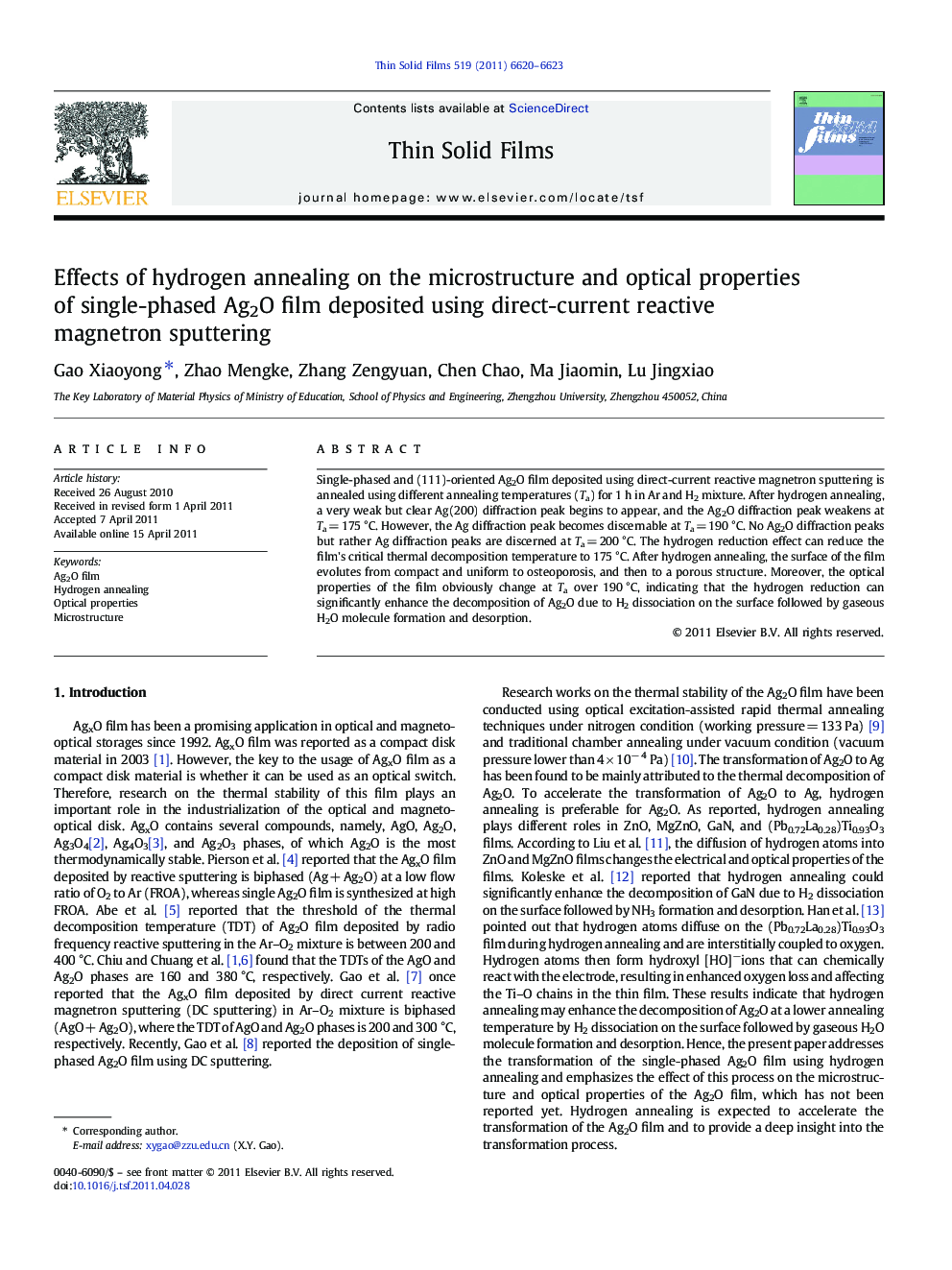| Article ID | Journal | Published Year | Pages | File Type |
|---|---|---|---|---|
| 1668324 | Thin Solid Films | 2011 | 4 Pages |
Single-phased and (111)-oriented Ag2O film deposited using direct-current reactive magnetron sputtering is annealed using different annealing temperatures (Ta) for 1 h in Ar and H2 mixture. After hydrogen annealing, a very weak but clear Ag(200) diffraction peak begins to appear, and the Ag2O diffraction peak weakens at Ta = 175 °C. However, the Ag diffraction peak becomes discernable at Ta = 190 °C. No Ag2O diffraction peaks but rather Ag diffraction peaks are discerned at Ta = 200 °C. The hydrogen reduction effect can reduce the film's critical thermal decomposition temperature to 175 °C. After hydrogen annealing, the surface of the film evolutes from compact and uniform to osteoporosis, and then to a porous structure. Moreover, the optical properties of the film obviously change at Ta over 190 °C, indicating that the hydrogen reduction can significantly enhance the decomposition of Ag2O due to H2 dissociation on the surface followed by gaseous H2O molecule formation and desorption.
